Well look at that, it’s five o’clock! Time to do your best Alan Jackson or Jimmy Buffett impression and get something poured tall and strong.
But those two probably didn’t know the types of Japanese alcohols that can be just as great, if not better, than what they are used to after a long day.
Japanese alcohol takes many forms. The history of each type is rooted in traditions and customs developed over centuries. A few of which we will look at today.
In this blog, we will go over:
- The history of Japanese alcohol
- 8 types of Japanese alcohol
So grab a cold one and raise it up as we learn more about Japanese alcohol.
History
The history of Japanese alcohol is a tale of tradition, innovation, and cultural integration that spans centuries.
Japan’s alcohol heritage is most famously represented by sake, a rice wine with origins dating back to the Nara period (710-794 AD). In the late 19th and early 20th centuries, Japan opened its doors to the West, bringing new alcoholic beverages into the country.
This period saw the introduction of beer with the founding of Japan’s first brewery, the Spring Valley Brewery, in 1869. Beer quickly gained popularity, leading to the establishment of more breweries like Asahi and Sapporo.
Western spirits such as whisky also began to make their mark during this time. Japanese entrepreneurs traveled abroad to study distillation techniques, culminating in the establishment of the first Japanese whisky distillery, Yamazaki, by Shinjiro Torii in 1923.
Today, Japanese alcohol encompasses a diverse range of beverages, from traditional sake and shochu to contemporary innovations like craft beer and premium whisky. Each sip of Japanese alcohol offers a taste of its rich history and the meticulous craftsmanship that defines Japanese culture.
Now, let’s look into these types of Japanese alcohol amongst others!
Types of Japanese Alcohol
Alright, enough talk. It’s time to learn about the different types of Japanese alcohol, their origins, and some of the best ways to enjoy them!
Sake
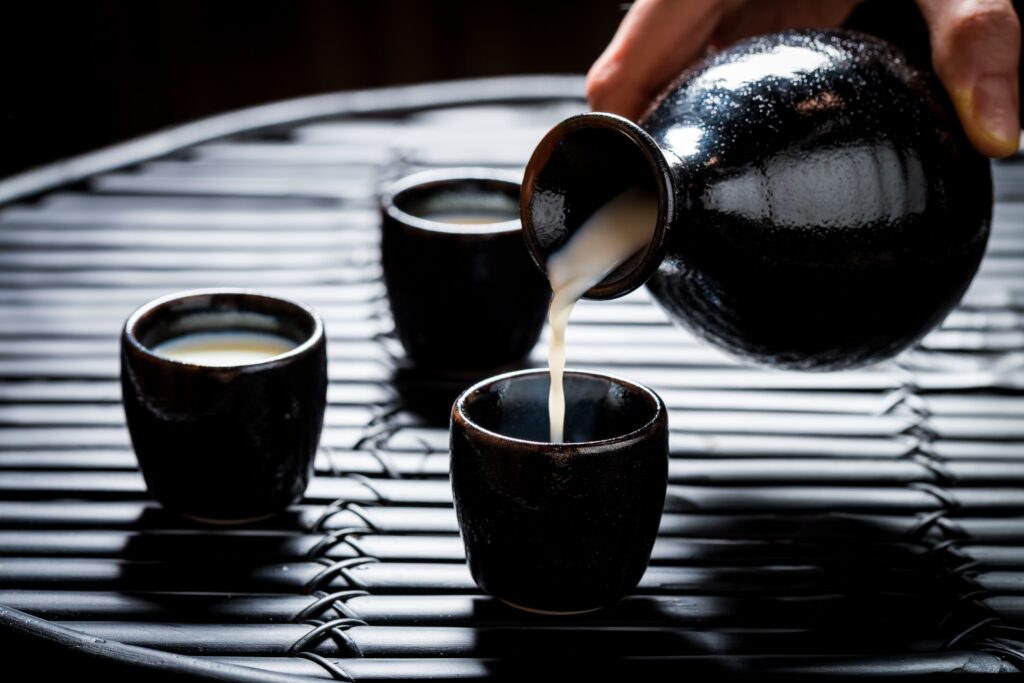
Sake is the most well-known alcoholic beverage when it comes to Japanese alcohol. We talked about it earlier, but there’s still more information about the history of sake to cover.
Origins
This rice wine was initially brewed by Shinto priests for religious ceremonies.
It evolved over time, adopting more sophisticated techniques during the Heian period (794-1185 AD). By the 16th century, sake had become a staple of Japanese culture, enjoyed by all classes and deeply ingrained in both social rituals and daily life.
Today sake is commonly served at all Japanese restaurants and steakhouses to pair with their meal. Sake can be traditionally served hot or cold depending on when the meal is taking place and what you have ordered.
Flavor Profile
Sake is characteristically light in flavor. There are also many kinds as alluded to earlier which affects the flavor. Some sake is best served with seafood because it complements the airiness of fish. Other sakes are better to be enjoyed without food as they have distinct flavors that don’t normally pair with food.
To learn more about sake, check out our blog on food pairings with sake.
Shochu
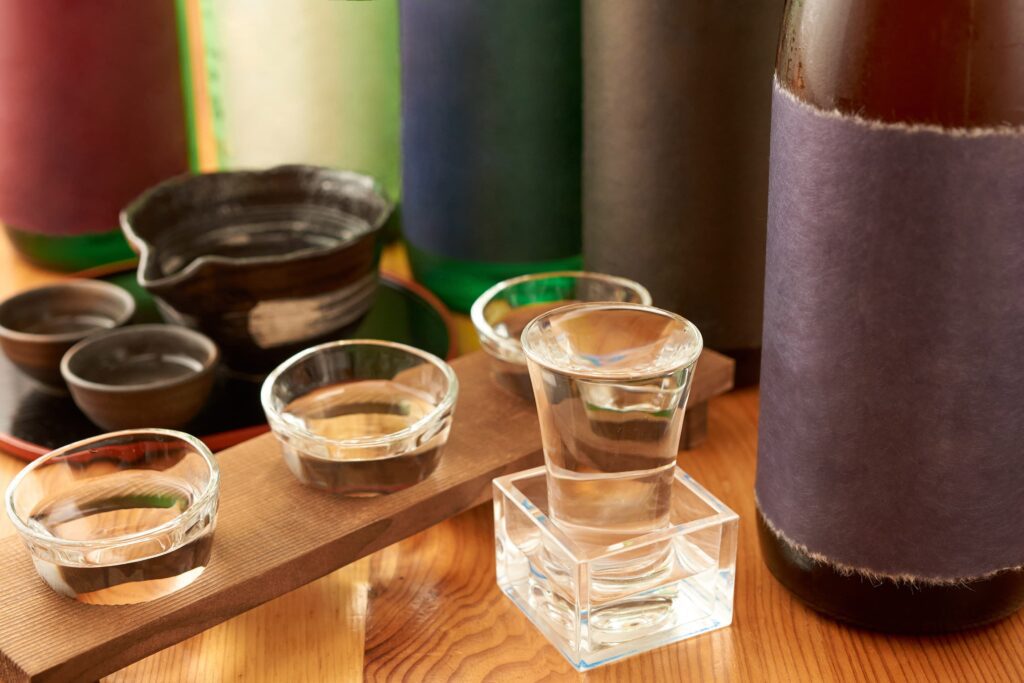
Shochu is a distilled spirit that boasts a rich heritage and diverse flavor profile. Unlike sake, shochu is distilled. This results in a higher alcohol content typically ranging between 25% and 45%.
Origins
Shochu’s origins can be traced back to the 16th century, although some evidence suggests it may have been produced even earlier. Initially, shochu was primarily produced in Kyushu, where the climate and available ingredients were ideal for production.
This Japanese alcohol is traditionally made with five ingredients:
- Barely
- Sweet Potatoes
- Rice
- Buckwheat
- Sugar
Shochu can be enjoyed similarly to most liquors. Neat or on the rocks are the most popular.
However, during hot summer days, it is served with cold water and vice versa during bitter cold winters.
Flavor Profile
Similar to Sake, Shochu’s flavor can differ. This is in regards to the mixture of the five ingredients listed earlier. Depending on the ratio, they can either be sweeter (more sugar or sweet potatoes) or light and subtle (buckwheat or rice).
Beer
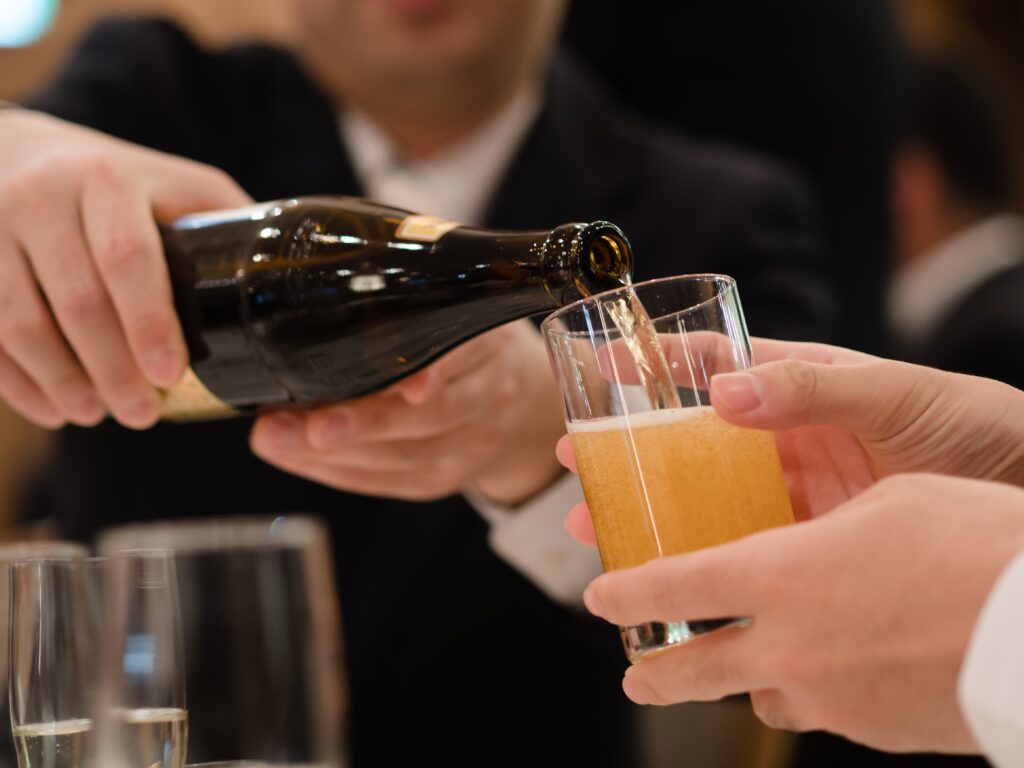
Japanese beer is a significant part of Japan’s drinking culture, known for its crisp and refreshing qualities. It encompasses a variety of styles, from light and easy-drinking lagers to more complex craft brews, much like the United States.
Origins
The history of Japanese beer began in the late 19th century during the Meiji Restoration. The first commercial brewery, Spring Valley Brewery, was established in Yokohama in 1869 by a Norwegian-American, William Copeland.
Japanese beer continued to evolve through the 20th century, with the introduction of lighter lagers that suited the local palate. In the 1990s, the craft beer movement began to take root, spurred by changes in brewing regulations that allowed for smaller-scale production.
Today, Japan boasts a thriving beer culture, with both large breweries and small craft beer makers contributing to a diverse and dynamic industry.
Most Japanese beers are made from the same ingredients as American beers:
- Malted Barley
- Yeast
- Hops
- Water
However, the malted barley can be substituted for other local grains like rice to create rice lagers.
Flavor Profile
Two words are used to describe Japanese beer: light and crisp.
Beer in Japan tends to be more subtle in its taste and aroma. Simplistic ingredients can then have other flavors added to them like citrus or teas to intensify the flavor.
Wine
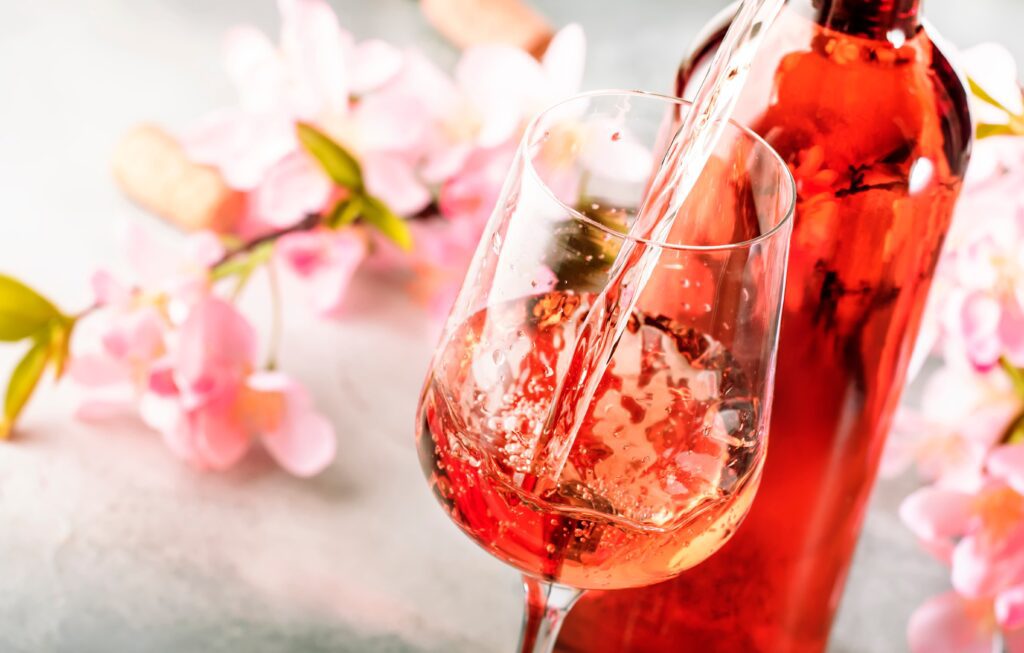
Japanese wine is characterized by its unique flavors and meticulous production methods. Unlike the more established sake, Japanese wine refers specifically to fermented grape wine.
Although a relatively young industry compared to traditional Japanese alcoholic beverages, Japanese wine is gaining recognition both domestically and internationally for its quality and distinctive characteristics.
Origins
The first attempts to produce wine in Japan were initiated by the government in the 1870s to promote Western culture and industry. However, it wasn’t until the 20th century that Japanese wine began to establish itself more firmly.
As the majority of wine is made from grapes, Japanese wine uses either koshu or muscat bailey grapes. Muscat bailey grapes are hybrid red grapes developed in Japan.
Flavor Profile
Wine, no matter where you are, will come with a fruity taste and aroma due to the grapes. But Japanese wine differs in the types of grapes listed above.
These grapes provide a hint of citrus to the taste, pairing well with seafood dishes.
Whisky
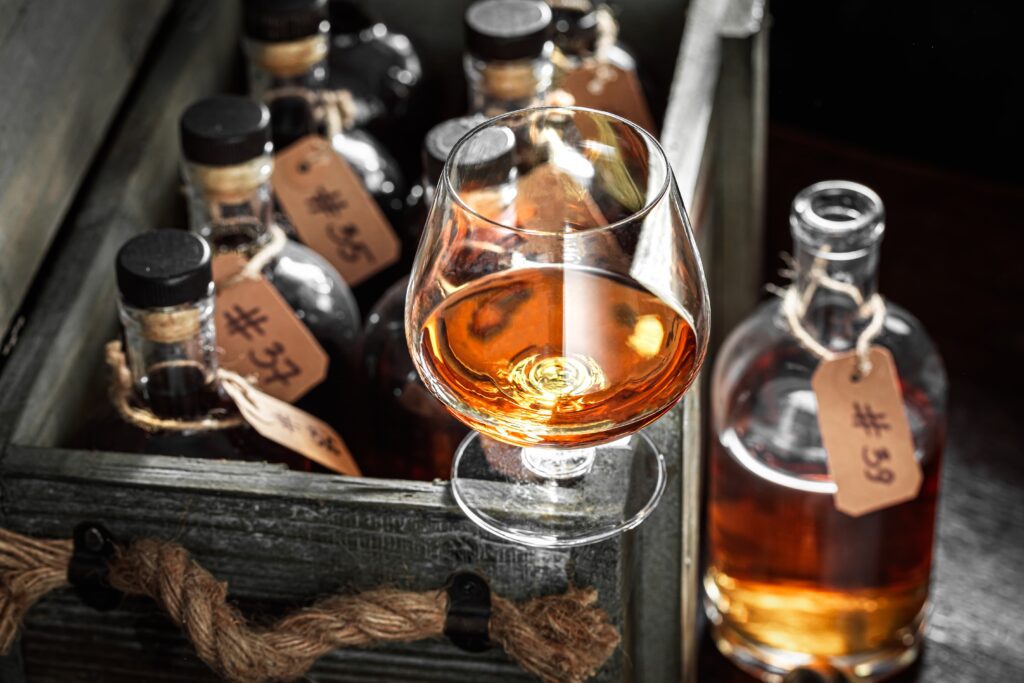
Japanese whisky is a refined spirit known for its meticulous craftsmanship and unique flavor profiles.
Origins
It draws inspiration from traditional Scottish whisky-making techniques but incorporates distinctive Japanese elements, resulting in a product that is both familiar and novel.
This has gained international acclaim in recent years, blending traditional Scottish methods with Japanese techniques. Brands like Suntory and Nikka have won numerous awards for their whisky, solidifying Japan’s reputation in the global spirits market.
You may ask, “What separates it from traditional Scotch whisky then?”
They use the same ingredients, but the distillation process is what matters.
Whisky is meant to be distilled in wooden barrels. This wood is locally sourced from indigenous trees from the area. In Japan, the most prevalent type of tree used for making these barrels is Mizunara.
Flavor Profile
Japanese whisky often strikes a balance between sweet, fruity, and smoky elements. The flavors are typically well-integrated, resulting in a smooth and refined taste.
Gin

Japanese gin is relatively new but rapidly growing in the world of international spirits. It is heavily characterized by its unique blend of traditional botanicals and innovative distillation techniques.
Origins
The history of Japanese gin is much shorter than that of sake or whisky. Inspired by the global gin renaissance, Japanese distilleries began experimenting with gin production in the 2010s.
Pioneers like Suntory and Nikka, already well-established in whisky making, leveraged their expertise to create gins that incorporate local botanicals and reflect Japan’s rich cultural heritage.
The first notable Japanese gin, Suntory’s Roku, was launched in 2017, marking a significant milestone in the industry. Since then, numerous distilleries have entered the market, each bringing its own unique approach to gin-making.
Japanese gin is traditionally comprised of:
- Juniper berries
- Yuzu (Japanese Fruit
- Cherry Blossoms
- Various Green Teas
- Sansho Peppers
Similar to how Japanese whisky is distilled in barrels made of local tree wood, gin uses local botanical ingredients to give it a distinctive aromatic scent and taste.
Flavor Profile
Japanese gin stands out for its unique and nuanced flavors, often influenced by local botanicals and a focus on craftsmanship. Some of the flavors are simple like citrus and green tea, but they can get a little out there for those unfamiliar with it, like seaweed
This Japanese alcohol is known for its blend of traditional gin botanicals with unique Japanese ingredients, creating a flavor profile that is both familiar and distinctly Japanese. It tends to be smooth, elegant, and balanced, making it a versatile spirit for both sipping and mixing in cocktails.
Fruit-Based Liqueurs
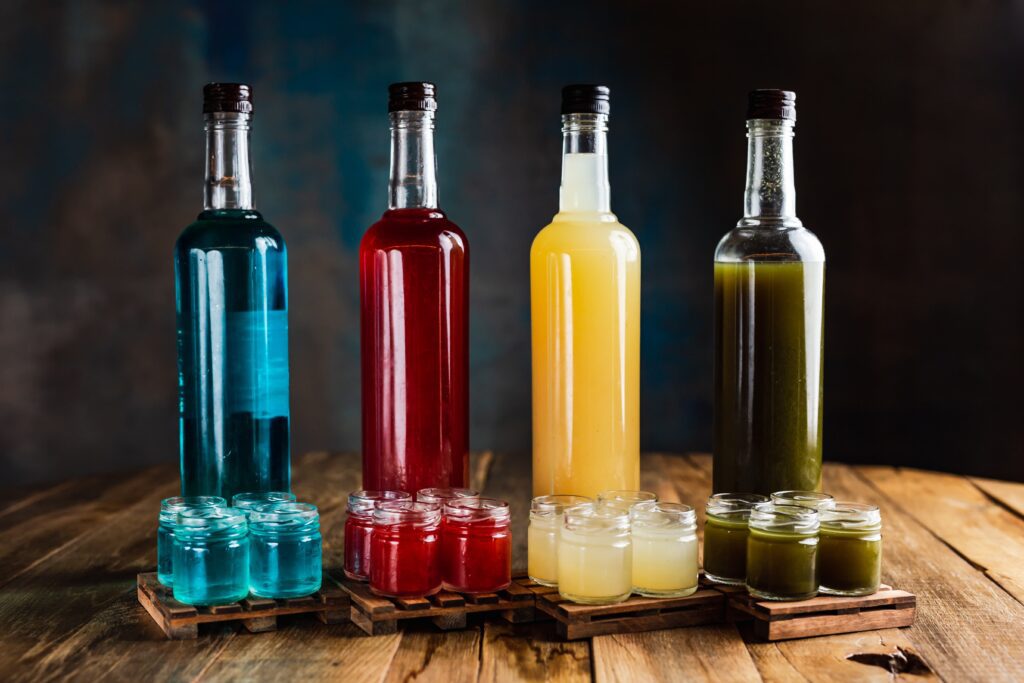
Japanese fruit-based liqueurs are a delightful category of alcoholic beverages made from a variety of locally grown fruits.
These liqueurs, known for their vibrant flavors and aromatic profiles, are crafted using traditional methods that highlight the essence of the fruits used.
Origins
The tradition of making fruit-based liqueurs in Japan dates back centuries, with roots in home-brewing practices where families would use seasonal fruits to create refreshing drinks.
One of the most well-known Japanese liqueurs is umeshu, made from ume (Japanese plum).
In recent decades, the commercial production of fruit-based liqueurs has expanded, with distilleries and breweries exploring a wide range of fruits such as yuzu, peach, cherry, and mandarin.
While fruit is the most important part of this Japanese alcohol, they must use sugar as well as shochu, sake, or neutral spirits to act as the alcohol base.
These liqueurs can be enjoyed as is but, if you’re looking to change it up, you can also find them mixed with sodas or drizzled on top of desserts.
Flavor Profile
As you can imagine, fruit-based liqueurs vary in their flavor profiles based on their ingredients. These liqueurs can also vary in general thickness, much like an Irish Cream, based on the distilling process, making its use applicable to different drinks and desserts.
Chu-Hi
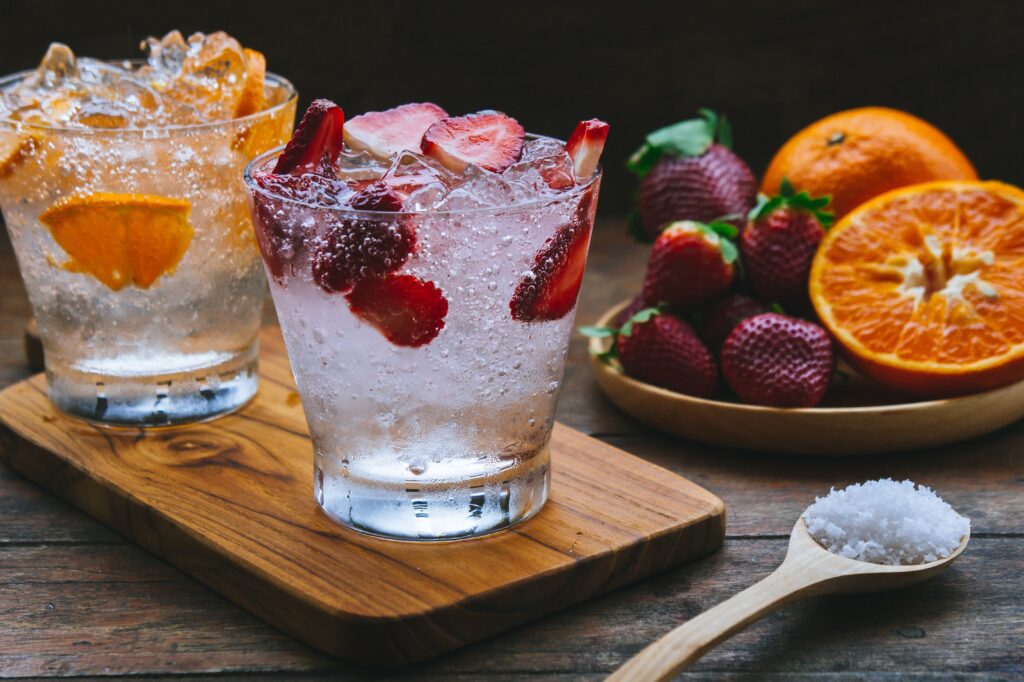
Chu-Hi, also known as Chūhai, is a popular Japanese alcoholic beverage known for its refreshing taste and convenience. It is a type of ready-to-drink cocktail, typically made from shochu or vodka, mixed with carbonated water and a variety of fruit flavors.
Think of a Japanese hard seltzer.
Chu-Hi is widely enjoyed across Japan, particularly during the hot summer months, and is available in both canned and bottled form.
Origins
Chu-Hi has its origins in post-war Japan, where it began as a simple cocktail served at Japanese bars. The name “Chu-Hi” is a combination of “shochu” and “highball,” indicating its original composition of shochu and soda.
In the 1980s, Chu-Hi began to be commercially produced and sold in cans, making it more accessible and convenient for consumers.
The popularity of Chu-Hi soared due to its versatility, lower alcohol content compared to traditional spirits, and wide range of flavors.
Chu-Hi is typically made from the following key ingredients:
Alcohol Base (either shochu, vodka or a neutral spirit)
- Carbonated Water
- Flavorings
- Sweeteners
Some of the most popular include lemon and grapefruit to more exotic options such as lychee, yuzu, and peach.
Flavor Profile
The flavor profile of Chu-Hi can vary widely depending on the flavoring used, but there are some general characteristics such as sweet, fruity flavors to herbal and floral flavors.
Overall, Chu-Hi offers a versatile and enjoyable drinking experience, with a wide range of flavors that cater to various preferences. It is especially appreciated for its refreshing and easy-to-drink nature.
Drink Responsibly at Kobe Japanese Steakhouse
Now that you know exactly what you’re drinking, it’s time to grab a seat at your local Kobe Japanese Steakhouse!
We keep all of the best Japanese alcohol available and incorporate it into our cocktails. If you’re not a cocktail person, don’t forget you can always order your favorites neat or on the rocks.
And never forget to drink responsibly.
